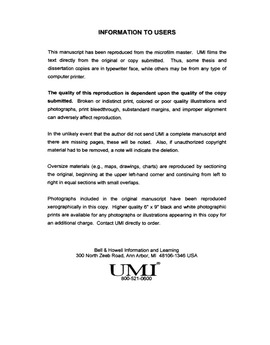| dc.contributor.advisor | Herczeg, Tibor J., | en_US |
| dc.contributor.author | Mccartney, Scott Alan. | en_US |
| dc.date.accessioned | 2013-08-16T12:30:44Z | |
| dc.date.available | 2013-08-16T12:30:44Z | |
| dc.date.issued | 1999 | en_US |
| dc.identifier.uri | https://hdl.handle.net/11244/5876 | |
| dc.description.abstract | The light curves of W Ursae Majoris stars often show asymmetries which are called the O'Connell Effect. Traditionally, these asymmetries were measured by calculating the magnitude difference of the peak intensity at each of the light curve maxima. These asymmetries are usually modeled with ad hoc spots, usually considered as magneto-hydrodynamic in origin. The work of Zhou and Leung offers a thermodynamically motivated solution for these light curve asymmetries, based on a dynamic model for the system. The results presented here are derived from a simple model using Zhou and Leung's theory. These models are then compared to a database of W Ursae Majoris systems that have published photometric solutions. | en_US |
| dc.description.abstract | Additionally two new parameters for measuring light curve asymmetry are developed: the O'Connell Effect Ratio and the Light Curve Asymmetry. These new parameters are calculated from the observational photometry and from the theoretical models. | en_US |
| dc.format.extent | ix, 152 leaves : | en_US |
| dc.subject | Wolf-Rayet stars. | en_US |
| dc.subject | A stars. | en_US |
| dc.subject | Double stars. | en_US |
| dc.subject | Physics, Astronomy and Astrophysics. | en_US |
| dc.title | A 2-D model for the O'Connell effect in W Ursae Majoris systems / | en_US |
| dc.type | Thesis | en_US |
| dc.thesis.degree | Ph.D. | en_US |
| dc.thesis.degreeDiscipline | Homer L. Dodge Department of Physics and Astronomy | en_US |
| dc.note | Source: Dissertation Abstracts International, Volume: 60-11, Section: B, page: 5565. | en_US |
| dc.note | Adviser: Tibor J. Herczeg. | en_US |
| ou.identifier | (UMI)AAI9949702 | en_US |
| ou.group | College of Arts and Sciences::Homer L. Dodge Department of Physics and Astronomy | |
